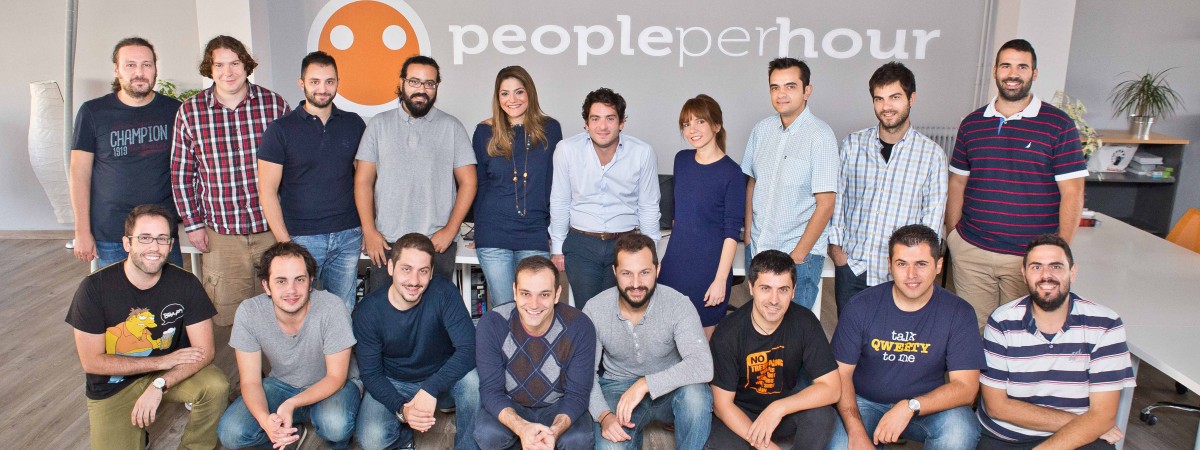The future of the labour market
In the past 5 years or so we’ve seen the creation of a $1Bn new market, one that’s been given numerous names. From crowdsourcing, to online outsourcing, online marketplacs and workspaces. Fundamentally its about the democratization of labour, Its about the empowerment of people to provide their skill in bite-sized quantities, on demand, across time zones, geographic barriers and to multiple vendors.
At large it’s the liberation of the labour force through technology which brings down those barriers. In a very ironic way its the implementation of the Marxist manifesto of liberation of labour through an ultra-capitalist system that breaks down red tape and reaps benefits to both sides: the employee and the employer. The benefits are vast and obvious. For businesses: cost reduction, more flexibility, speed, more diversity and reach. For workers : financial independence, a better work-life balance, and enhanced income. Over the internet and mobile apps you can now – as a small business just starting off even – reach millions of talented freelance workers proving their services in the cloud. Even though we are just at the beginning we already take it for granted. Think about how hard that was 20 years ago for a business of the previous generation to do that. How many resources it would have to put to work to track down that unique skill set across the globe. Now it comes and finds you when you post a job on a site like PeoplePerHour, within minutes.
The online labour force today exceeds 10 million people. That’s much larger than the workforce of the largest multinationals like WalMart and GE. And at no fixed cost. Thats the power that a business just starting off has at its disposal today.
Yet we are just at the beginning. Independent Research by Staffing Industry Analysts has predicted this market to grow $5Bn in just the next 5 years, I think thats an understatement of what we will see in reality.
So what does the future hold for labor in the cloud? Well first I think more talent will join this pool of now estimated 10 million people working online in the cloud. As more skills onboard, they will provide more breadth and open up new categories of services which are currently not being offered. Much like in commerce the long-tail will be the one that really drives widespread adoption. It’s the niche skills that one would never think they could hire for that will bring the laggard buyers into the market. The mainstream skills are the ones that attract the early adopters
Secondly, I think the cloud as we know it will trickle to a plethora of new devices that are now in the making. I think the evolution of hardware will be what drives step change in the decade to come. We’ve already gone from desktops and laptops to mobiles and tablets and next will be wearable computing that’s immersed in the things that surround us. Enabling that transaction to happen on an ever growing number of such devices frictionlessly will be a big challenge but will happen.
Funnily enough i remember as a child being obsessed with the Knight Rider, how Michael could talk to Kitt via his wrist watch. As a child I was obsessed with watches, looking for the latest Casio model that looked like it could do that. Ironically we are now not far from that becoming reality. Not long from now we will be able to talk to a device like a wrist-watch, our glasses, a keyring – you name it – connect to the cloud and order anything from a holiday, a book, or hire someone to go do an errand or task for you while you are on the go.
These two drivers – the onboarding of more supply and maturing of the infrastructure that connect it to buyers will lay the bedrock for the next step change. Once its in place it will act as a catalyst, accelerating the onboarding of more and more buyers of services to transact through that infrastructure. Today the early adopters of this way of working are small businesses which rare traditionally more nimble and prone to new practices. More specifically it’s the newer generation of tech savvy small businesses.
The laggards will be the more traditional mom-and-pop businesses at the smaller end, and the medium sized and larger businesses which are slower to adopt change. But for sure they will. The benefits outweigh the friction of transition multifold. Over time larger businesses are starting to realize that their traditional advantages of ‘economies of scale’ are withering. The smaller more nimble businesses are the ones that are disrupting the incumbents today and thats made many large businesses start changing their cultures to act as a collection of smaller more nimble businesses. It will take time to transition fully but it will happen. Alas when it does they will start embracing labour in the cloud a smarter way of getting their stuff done. Their headcount in the traditional sense will be reduced and they will get smarter, nimbler, leaner and tap into the vast skills pool out there that will continue growing.
Lastly, the post-laggards i think will be consumers who will start using labour in the cloud do outsource anything and everything – from household chores and errands to family trips organizing, printing their christmas cards, designing their new house decor and more. This has already started happening with some specialized marketplaces focussing in such consumer verticals but its by no means mainstream as yet. Its the most savvy of the consumers who go online searching for the alternative way of doing things
Hyper local marketplaces have worked for certain specialized services like taxi services finding a builder or a mechanic. But again the thing that will blow this out to the next level are the long tail services that will attract the masses. In almost every market what creates that jump from “i may need this product” to ” i need to have this product” is when the use of that product broadens out so much that it surpasses the niche specialized intent it initially is created to serve. Computers became mainstream when they started having games and applications like word processing and all sorts beyond those used by mainframes in companies. That process is accelerated when products become platforms for 3rd party vendors to create those applications on top of them, from the outside-in, much like Microsoft did for the personal computer, Apple for mobile in creating the smartphone, Facebook via its platform API and so many more examples.
This will happen to services. Once early adoption reaches critical mass, the most open providers that embrace outside-in platform driven innovation will build that long tail faster which will eventually bring the laggards into the market and make buying and selling of services online a mainstream phenomenon – akin to or even bigger than commerce is today. We forget sometimes that developed economies are 70% services. I’m a big believer that this will be mirrored in this new economy. Im a big believer that technology doesn’t change the underlying macro fundamentals, it just transitions the experience to a new standard that unlocks value to the customer in step changes. Buying and selling services will be as common-place as buying a book is online today; but across many more mediums and platforms.

















Your email address will not be published.